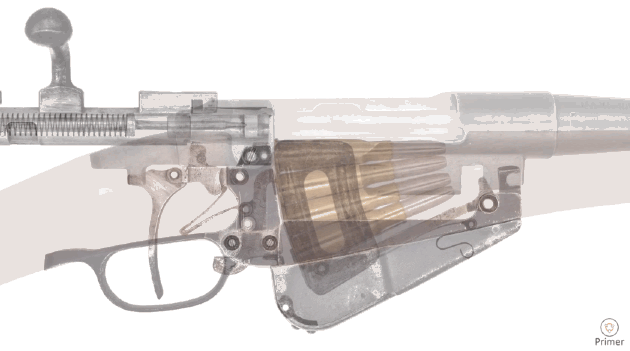In a previous post I bemoaned the fact that while I like the 22 Magnum cartridge, it’s not really a precision round.
So why swoon over this high-dollar rifle in that caliber?

Attempts at amateur gunsmithing, citizenship, and other skilled trades
In a previous post I bemoaned the fact that while I like the 22 Magnum cartridge, it’s not really a precision round.
So why swoon over this high-dollar rifle in that caliber?

I’ve described using bolt shims to reduce flyers out of my 22 Winchester Magnum Rimfire (WMR) target rifle.
While it helped, that rifle still doesn’t shoot as well as my highly modified Ruger 22 LR, or even my bone stock Tikka 17 HMR.
Maybe it’s the ammunition.

I teach a beginning firearms class. After an hour in the classroom, our students shoot steel targets using 22 LR Savage bolt action rifles and Ruger Mark III 22/45 target pistols.
I was shooting my elderly Ruger Single-Six recently when it occurred to me that as much as I like this revolver–which spends most of its time in the 22 WMR configuration–it would be fun to own an accurate, semi-automatic 22 pistol like the ones we use in class.
Enter my latest purchase: a Ruger Mark IV 22/45 Tactical. I know, I know: I keep saying “I don’t need more guns”–but here we are.

Now that I had my suppressor, the first order of business was to check existing loads to see if they still worked.

After that, all new loads would be developed with the suppressor on the rifle.
Continue readingSometimes during load development you can fall back on the wisdom of the ages: even allowing for improved components, you don’t need to completely reinvent the wheel.

Such was the case with my 30-06, a rifle that was hugely popular decades before I was born–and still is. Lots of communal wisdom regarding pet loads out there.

I began the year with three beautiful bolt action rifles: two rebarreled Remington 700s in 270 Winchester and 30-06 Springfield, and a Tikka T3X in 6.5 Creedmoor.
They each shoot factory ammunition well and excel with handloads, and all three fit me like a glove. Between them, they could handle almost any reasonable shooting application.
My 6.5 Creedmoor and 270 Win (the latter rebarreled with a faster-twist offering) sufficed for light-to-medium hunting and target duty.
The 270 (with the 170 grain bullets made possible by the faster barrel twist) and 30-06 between them covered heavier projectile requirements.
However, there comes a time when one must abandon old ways and embrace the new.
Continue readingSetting optimum headspace on your rifle brass can be a confusing chore. But if I can do it, so can you.
Let’s start with the basics.
When I pull the trigger of a firearm, its firing pin strikes the cartridge primer, igniting it, which in turn sets off the powder charge.

I recently found a Rock Island Armory 1911 Ultra FS 10mm for sale on Gunbroker.com. It was marked down to an unbeatable price by one of my favorite sellers, so I pounced.

This after I’d said–not for the first time–“I don’t need any more guns!”
Continue readingMy heroic Johnson outboard motor took all my attempts at maintenance and repair in stride, so I decided to finish the project off with a flourish by adding a tachometer.

Tachometers serve many important functions, but my main reason for wanting to install this one was that it looked spiffy:

Having bought ANOTHER boat–a 1985 Bass Tracker–I promptly set about refurbishing it. Unlike the previous two, this one had been partially restored by a previous owner.
As I’ve mentioned, I didn’t agree with all of the decisions made along the way. The bright blue marine carpet, for example, was a bit garish for my tastes.
More importantly, the boat was underpowered: unless you’re in no hurry, a hull weighing 840 pounds needs more than 25 horsepower to push it.

Although I was tempted, the cost of a new engine far exceeded my budget. So it was that I entered the brave new world of used outboard motors.
Continue reading© 2025 The Resting Duck
Theme by Anders Noren — Up ↑